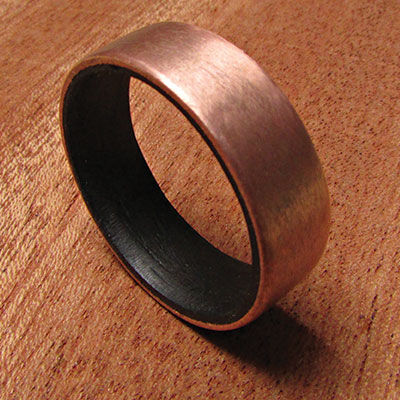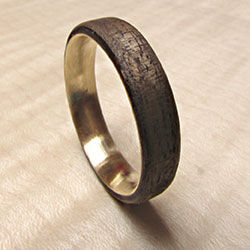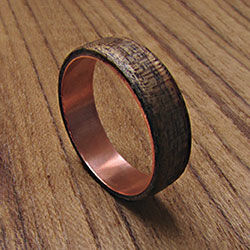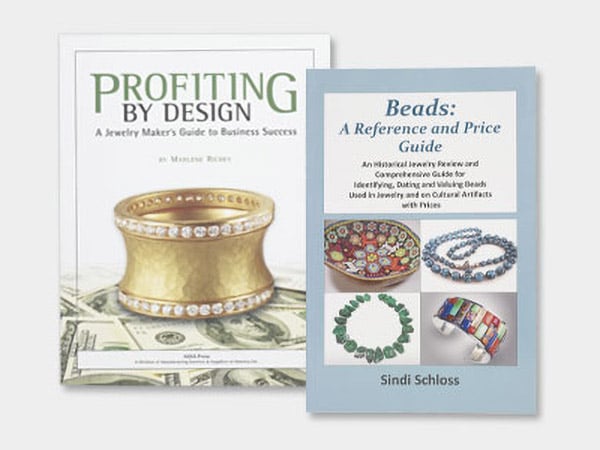How to Write Stunning Item Descriptions
by Patrice Lewis
One day in a moment of idleness, author Bill Bryson found himself leafing through a gift catalog for upscale kitchen items. As he relates in his book, “I'm a Stranger Here Myself," gradually he became more and more immersed in the product descriptions. One item was so fascinating he nearly purchased it, intrigued by the heady possibilities of the "spring tension arm," the "stainless steel guide," the "crafted brass finial," and particularly the "rubber gasket for exceptional stability." He was ready to plunk down $49.95 (plus shipping and handling) before realizing the "exotic pedigree and technical complexity" was describing ... a paper towel holder.
The scary thing, Bryson noted, is "often these descriptions are written so artfully that you are almost taken in by them. Even socks come with lengthy, scientific-sounding descriptions extolling their seamless closures, one-to-one fiber loops, and hank-linked yarns."
Cynicism aside, Bryson highlights a very important but often underappreciated aspect of advertising: the importance of snappy, brilliant copy writing for product descriptions. The artful nature of this verbiage is no accident. In fact, product descriptions are a huge industry.
Madison Avenue isn't stupid. For nearly a century and a half, advertising professionals have understood the importance of seductive words as a sales tool. Advertising has become, literally, a science. It is offered as a subject in universities, it's the focus of vast psychological research, and it's honed to perfection in the unforgiving crucible of free-market capitalism.
Successful crafters cannot just be crafters. They must also be marketers, PR specialists, and accountants, among much else. But it's the marketing that often stymies the most gifted artist. The home crafter and handmade business person ignores the importance of writing stunning item descriptions--at his or her peril. For those trying to learn the ropes of this complex science, here's a crash course:
Start with the basics
Laura Prestwich, lead copywriter for Fuze Branding, www.fuzebranding.com, and an Etsy seller, www.etsy.com/shop/MakerDoerMama, says: "Too often, sellers forget the very basics. You need to assume your potential customer cannot see a photo."
So, without a photo, how do you describe your product? "Give the dimensions," recommends Prestwich. "How much does it weigh? Do you have a size chart you can include? What materials did you use? How should they care for the item? Think like a consumer and ask yourself what you would need to know if you were preparing to pull the trigger."
Don't stop there, though. "Do you have a product that pairs well with the one you're describing?" asks Prestwich. "Link to that product, too. It can play as a 'great recommendation' for gifters."
This advice is confirmed by Katarina Vojinovic, who describes herself as "one-half of Dzefer, a small family Etsy store, www.etsy.com/shop/dzefer, and who makes custom wedding rings of wood and copper. "Like many small handmade businesses, we need to make each visit to our page count and have limited time to do it," she says. "The first rule is to stick to this template: what, who, when, where, and why. The first paragraph needs to outline what the item actually is. You want to mention color, size, and category."
Prestwich offers a bonus piece of advice for photography. "Have the solid product description paired with context, or in-use, photos. When a shopper can read and see exactly what they're getting, you're much more likely to overcome that barrier to buy and win trust."
But, don't say too much
Within this basic rule, you don't want to go overboard. "Try to leave out filler words such as very, beautiful, stunning, etc.," Vojinovic says. "Do use words like unique, one-of-a-kind, or alternative if that describes the item."
Prestwich agrees: "Are you cramming your description with unnecessary policy and procedure? Are you giving your return policy before you've even sold them [the customer] on the product? Save that for your FAQ section and reclaim that descriptive space for descriptions."
Set the scene
One thing crafters and other makers must tap into is the buyer's imagination. How will the item look in their home? What will it be like to use? How will it look and feel when it is worn? The words must paint a mental picture that supplies images to the buyer.
"Let's say you're selling a luxurious sweater from a high-quality, custom-dyed yarn blend," says Prestwich. "Set the scene! Talk about the cozy feeling of a timeless classic, the colors reminiscent of a steel-grey sky--and stay true to your brand's personality. If your brand enjoys a little humor, don't be afraid to go there. Good business is personal."
This rustic copper wedding band, handmade by Aleksandar Vojinovic of Dzefer, is thoroughly described as:
This copper and wood ring is the perfect rustic wedding band ring for men. Robust and masculine, this ring is made from real Eucalyptus wood and has an outer copper ring. The outer ring not only adds to the rustic style of the ring but makes it stronger.
The wood and copper ring is made with 100 percent pure copper. The copper ring will change color, as copper does with time, making it a deep, rich, reddish-brown color.
The dark wood wedding band is made with hard working, strong men in mind. This is a wedding band that they will wear with pride. Not only because it symbolizes the beautiful, amazing, and special day but also their own individuality and strength.
The ring is handmade from real wood. Even though eucalyptus is so dark that you can't really see the grooves, each ring is individual and different from the next.
The wood inlay ring is the exact opposite of another copper and wood ring that we have. One has the copper ring on the inside, while this one boasts it on the outside.
Scene-setting is very important. Examine paint colors in a hardware store or clothing descriptions in a catalog. An item is never just "green," or "white," or "blue." Instead, each color name is designed to steer the customer toward whatever lifestyle he or she is trying to capture: Modern Light, Urban Loft, Vintage Masters, Island Brights, Naturals, Whitewash, or Thoroughbred, are descriptive examples you may encounter. Without even looking at the article of clothing or the sample photos of painted rooms, you get a feeling of what to expect. These descriptions can have a powerful effect on marketing.
Consider this: if a woman dons a blouse described as a "Dark Thyme" color, will the buyer find herself transported to a pretty garden with lots of herbs growing in luxurious profusion? Maybe not, but that's the scene to set. That's the feeling the buyer wants to purchase--and the seller is trying to invoke.
- Specially treated and waterproof
- Durable wedding bands will not break with ease
- Wooden interior makes the rings extra comfortable
- All-natural European Walnut and Burmese Teak
- Pure copper exterior
- The two rings create a heart shape when put together
- Packed in black gift boxes ready to be gifted
- Shipped with signature confirmation for free
- We accept exchanges, returns, and refunds
- Fast replies to inquiries (within 24 hours)
- All rings can be customized
Write a picture
While the product itself is presumably eye-catching, the text must be as well. One of the best techniques is to use bullet points. "Bullet points should highlight the specific features of the product," says Vojinovic. "Some people read, but many skim through a description. By stating the size, materials, and any benefits of your product with bullet points, you'll answer all questions quickly and simply. The easier it is for your buyer to find the information they're looking for, the higher the chance of a sale."
Prestwich agrees. "You do not have to write a novel," she emphasizes. "You can describe the basics in a simple bulleted list that's easy for the shopper to scan. I usually pair that with a short three or four-sentence paragraph introducing the product and creating a scenario that invites customers to imagine using the product."
Isn't it all about me?
Crafters are justifiably proud of their work, but let's face it: the reader needs to care more about the item, not you. "We know you made it, but stop selling yourself," advises Vojinovic. "Wherever you can, replace the words 'I,' 'me,' or 'my,' with anything else. For example: 'I made this ring when ...' becomes 'This ring was made ...' The reader should be more concerned about the item, not you. It's hard to hear, but true. Also, by leaving yourself out of the picture, you become more logical and methodical in transferring your message to the reader."
Vojinovic continues, "The way to make a good description personal is by talking to your reader directly. If you make cupcake toppers, use lines like, 'your cupcakes will look special with these toppers,' or 'your child's birthday party will be a hit, and everyone will thank you for it.' It paints a picture while also evoking emotion."
In short, the product description should be about the product and how it will benefit the buyer--not about you. The place for "you" is in the "about" section of your website.
Practice makes perfect
Like any skill, writing stunning item descriptions takes practice, and you're likely to fall flat at first. Fine-tuning your verbiage might only happen after sales are not what you expected.
That said, "writing descriptions is something that comes easier with time," Vojinovic notes. "In fact, I have a whole notepad dedicated to descriptions I want to change. As you write more descriptions, fixing older ones will be easier."
A little practice now might translate into much-improved sales later. Now, it's time to rev up those mental engines and start those bullet points.
Shop for Your Materials Here:
Have a question regarding this project? Email Customer Service.
Copyright Permissions
All works of authorship (articles, videos, tutorials and other creative works) are from the Fire Mountain Gems and Beads® Collection, and permission to copy is granted for non-commercial educational purposes only. All other reproduction requires written permission. For more information, please email copyrightpermission@firemtn.com.






